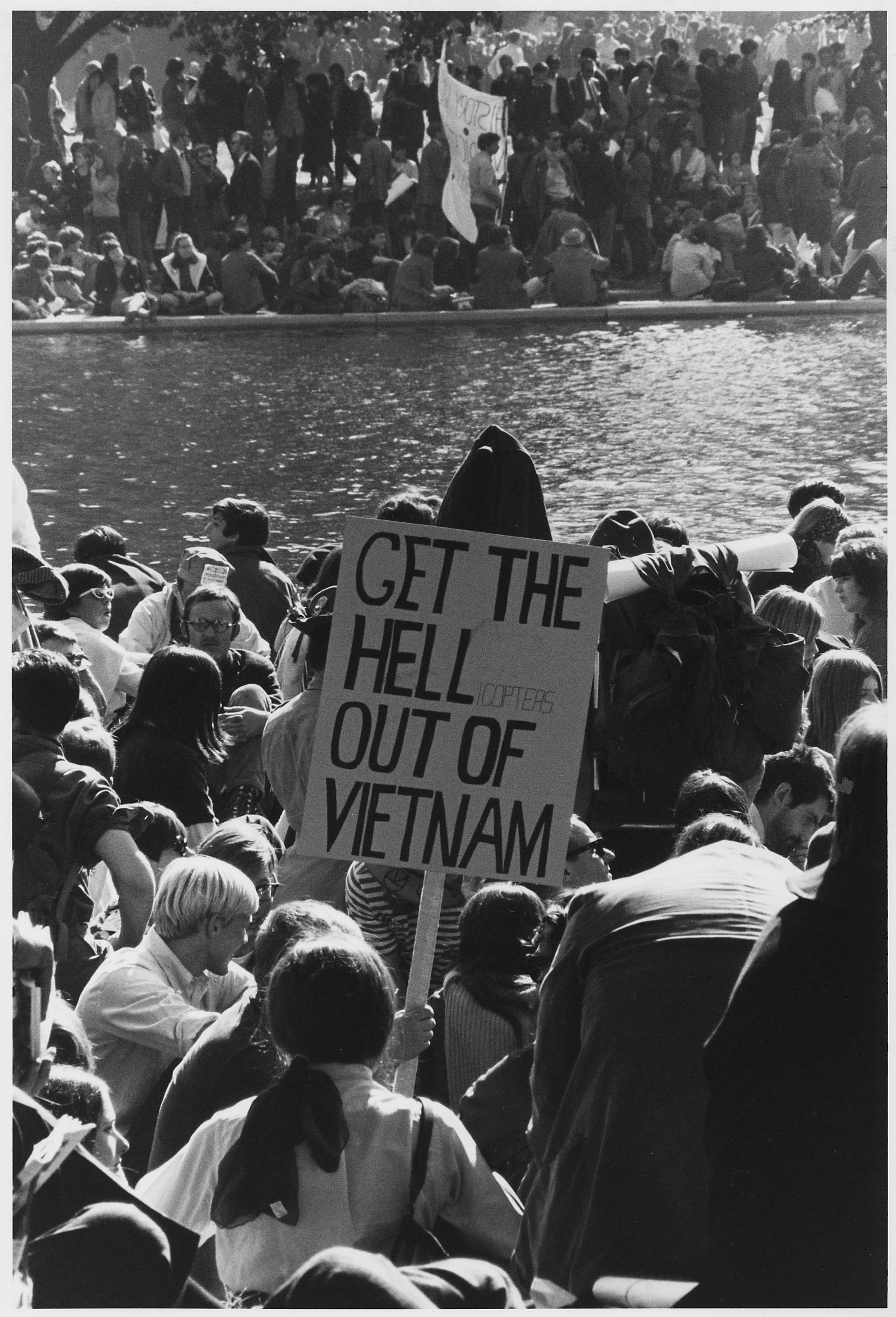The March on the Pentagon
10/21/1967
Add to Favorites:
Add all page(s) of this document to activity:

In the late 1960s during the Vietnam War, antiwar protests mounted. Public support for the war fell below 50 percent for the first time. In October of 1967, 70,000 protesters marched on the Pentagon, the headquarters of the Department of Defense, to protest the war in Vietnam.
This photograph shows anti-war demonstrators at the reflecting pool in Washington, DC. The stereotype persists that members of the peace movement were hippies, college students, and liberal intellectual elites. In reality, there were antiwar sentiments across the political and economic spectrum.
The Johnson administration tried to tamp down dissent with news of progress, going so far as to call General Westmoreland home from the battlefield to present a glowing report to the American people. Military officers were pressured to overestimate enemy casualties and underestimate enemy strength—a practice that would have devastating consequences for President Johnson.
This photograph shows anti-war demonstrators at the reflecting pool in Washington, DC. The stereotype persists that members of the peace movement were hippies, college students, and liberal intellectual elites. In reality, there were antiwar sentiments across the political and economic spectrum.
The Johnson administration tried to tamp down dissent with news of progress, going so far as to call General Westmoreland home from the battlefield to present a glowing report to the American people. Military officers were pressured to overestimate enemy casualties and underestimate enemy strength—a practice that would have devastating consequences for President Johnson.
Transcript
Get the Hell [in small letters: icopters] out of VietnamThis primary source comes from the Collection LBJ-WHPO: White House Photo Office Collection.
National Archives Identifier: 192603
Full Citation: Photograph 7051-33; Public Reactions: The March on the Pentagon; 10/21/1967; Johnson White House Photographs, 11/22/1963 - 1/20/1969; Collection LBJ-WHPO: White House Photo Office Collection; Lyndon Baines Johnson Library, Austin, TX. [Online Version, https://www.docsteach.org/documents/document/march-on-pentagon, April 17, 2024]Activities that use this document
- The Vietnam War Timeline: Understanding the nature of a controversial conflict
Created by the National Archives Education Team
Rights: Public Domain, Free of Known Copyright Restrictions. Learn more on our privacy and legal page.



